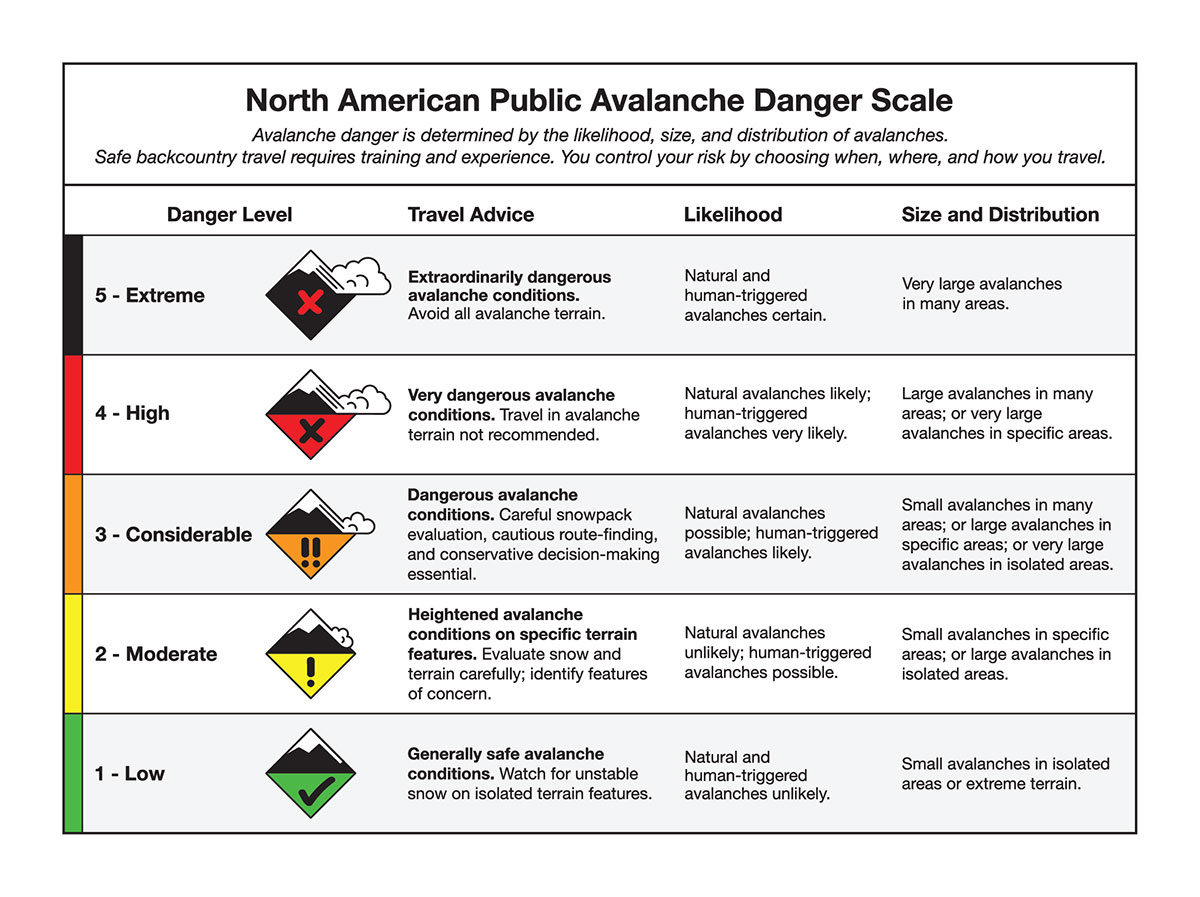Introduction to Avalanche Bulletins
Avalanche bulletins are essential resources for anyone planning to travel in snow-covered mountainous areas. They provide detailed insights into current snow and avalanche conditions, helping backcountry travelers, such as skiers, snowboarders, and snowmobilers, to plan their routes safely. Understanding these bulletins can mean the difference between a safe adventure and a potential disaster.
Avalanche bulletins are published regularly during the winter season and offer a structured overview of the avalanche hazard in a specific area. These bulletins are crucial for anyone engaging in winter sports or backcountry travel as they provide vital information on the likelihood of avalanches, current weather conditions, and snowpack stability.
Key Takeaways
| Aspect | Details |
| Definition | Avalanche bulletins provide crucial information on avalanche hazard, snowpack stability, and weather. |
| Components | Bulletins typically include danger ratings, avalanche problems, and detailed forecast discussions. |
| Importance | Essential for safe backcountry travel, helping users assess risks and make informed decisions. |
| Interpretation Tips | Understanding danger levels, regional forecasts, and specific avalanche problems is critical. |
| Safety Measures | Regularly check bulletins, plan routes accordingly, and carry essential safety gear. |
Components of an Avalanche Bulletin
- Danger Rating: The North American Public Danger Rating is the most critical part of the bulletin. It indicates the overall avalanche hazard for a given day, classified into five levels: Low, Moderate, Considerable, High, and Extreme. Each level comes with specific travel advice and is color-coded for quick reference. For example, a Moderate danger level advises heightened caution, especially on specific terrain features, while a High danger level suggests avoiding avalanche terrain altogether.
- Low (1): Generally safe avalanche conditions. Triggering is unlikely except in isolated areas with extreme terrain.
- Moderate (2): Heightened avalanche conditions on specific terrain features. Human-triggered avalanches are possible.
- Considerable (3): Dangerous avalanche conditions. Human-triggered avalanches are likely.
- High (4): Very dangerous avalanche conditions. Natural and human-triggered avalanches are likely.
- Extreme (5): Extremely dangerous avalanche conditions. Widespread natural or human-triggered avalanches certain.

- Avalanche Problems: Avalanche problems describe specific types of avalanche hazards present due to current snowpack conditions and weather patterns. Common problems include storm snow, wind slabs, and persistent slabs. Understanding these problems helps in identifying potential hazards in different terrain. For instance, storm snow might indicate recent heavy snowfall, while wind slabs refer to snow that has been transported and deposited by wind.
- Loose Dry: A release of dry, unconsolidated snow. Typically starts at a single point and entrains snow as it moves downhill, forming a fan-shaped avalanche. Known as point-release avalanches or sluffs.
- Loose Wet: Release of wet, unconsolidated snow or slush. Starts at a point and entrains snow as it moves, forming a fan shape. Known as point-release avalanches or sluffs.
- Storm Slab: A cohesive layer of new snow that breaks within the storm snow or on the old snow surface. Often forms during or shortly after a storm.
- Wind Slab: A cohesive layer of snow formed by wind deposition, typically on the leeward (sheltered) side of terrain features. These slabs can range from soft to hard and may sound hollow.
- Persistent Slab: A cohesive layer of snow in the middle to upper snowpack that fails due to a persistent weak layer such as surface hoar or depth hoar. These weak layers can remain dangerous for days to months.
- Deep Persistent Slab: A thick, cohesive slab breaking deep in the snowpack or near the ground due to persistent weak layers like depth hoar. Often results in large, destructive avalanches.
- Wet Slab: A cohesive layer of snow that releases when the flow of liquid water weakens the bond between the slab and the bedsurface below. Often occurs during prolonged warming or rain-on-snow events.
- Glide: The release of the entire snow cover as it glides over the ground. Occurs in moist or wet snow and is often preceded by glide cracks.
- Cornice: The release of an overhanging mass of snow formed by wind deposition over a sharp terrain feature like a ridge. Cornices range from small to large, potentially breaking back onto the ridge top.
- Forecast Discussion: This section provides detailed information about recent weather events, current snowpack conditions, and expected avalanche activity. It helps users understand the nuances of the forecast and make more informed decisions. For example, a forecast discussion might explain how recent temperature fluctuations have affected the snowpack’s stability.
- Snowpack Analysis: Insight into the stability and structure of the snow layers.
- Weather Impact: How recent and upcoming weather conditions, such as snowfall, temperature changes, and wind, influence avalanche hazard.
- Avalanche Activity: Reports on recent avalanche occurrences and their triggers.
How to Interpret Avalanche Bulletins
To effectively use avalanche bulletins, follow these steps:
- Check Regional Forecasts: Start with the forecast for your specific area. Different regions might have varying avalanche conditions. For example, if you’re planning a trip to the Cascades, the Northwest Avalanche Center would be most relevant.
- Understand Danger Ratings: Familiarize yourself with the five-level danger scale. For example, a “Considerable” danger level means that avalanches are likely and caution is required. This rating indicates that even experienced backcountry travelers need to exercise significant caution.
- Analyze Avalanche Problems: Identify the types of avalanche problems mentioned in the bulletin. This will help you understand the specific risks you might face. For instance, knowing that wind slabs are present can help you avoid wind-loaded slopes where avalanches are more likely to occur.
- Read the Forecast Discussion: Pay attention to the detailed analysis provided. It often contains valuable insights into how recent weather has affected the snowpack. For example, a discussion might highlight that recent warm weather followed by a cold snap has created a weak layer in the snowpack.
Practical Tips for Backcountry Travelers
- Plan Ahead: Always check the avalanche bulletin before heading out. This will help you prepare for the conditions you might encounter. For instance, if the bulletin indicates a High danger level, you might consider postponing your trip or choosing a safer route.
- Carry Essential Gear: Always bring avalanche safety equipment such as shovels, probes, and beacons. Ensure you know how to use them. For example, a beacon is only useful if you know how to conduct a search in case of an avalanche.
- Stay Informed: Conditions can change rapidly. Continuously monitor the forecast and adjust your plans as necessary. For example, a sudden storm can quickly elevate the avalanche hazard.
- Travel Wisely: Use a backcountry run list to avoid high-risk areas, especially during elevated danger levels. Stick to safer routes and be conservative in your decision-making. Utilize travel techniques so that only one person at a time is exposed to avalanche hazard.
- Understand Terrain Traps: Terrain traps are features that can increase the severity of being caught in an avalanche. These include gullies, cliffs, and trees. Avoid traveling in or near these areas, especially during higher danger levels.
- Learn and Practice: Take avalanche safety courses to understand better how to read bulletins, use safety equipment, and recognize dangerous conditions. Practice these skills regularly to stay proficient.
Regional Forecasts
Bulletins are specific to regions, providing localized information crucial for accurate risk assessment. It’s important to check forecasts for the specific area you plan to visit. For example, the avalanche conditions in the Rocky Mountains might differ significantly from those in the Sierra Nevada.
Avalanche centers across the United States play a crucial role in providing safety messaging, educational resources, and real-time avalanche forecasts to help backcountry travelers make informed decisions. Here’s a concise overview of the main avalanche centers and the areas they serve:
Forest Service Avalanche Centers
- Bridgeport Avalanche Center – Bridgeport, CA
- Bridger-Teton Avalanche Center – Teton Village, WY
- Chugach National Forest Avalanche Information Center – Girdwood, AK
- Flathead Avalanche Center – Hungry Horse, MT
- Gallatin National Forest Avalanche Center – Bozeman, MT
- Idaho Panhandle Avalanche Center – Ponderay, ID
- Northwest Avalanche Center – Seattle, WA
- Mt. Shasta Avalanche Center – Mount Shasta, CA
- Mt. Washington Avalanche Center – Gorham, NH
- Payette Avalanche Center – McCall, ID
- Sawtooth Avalanche Center – Sun Valley, ID
- Sierra Avalanche Center – Truckee, CA
- Utah Avalanche Center – Salt Lake City, UT
- West Central Montana Avalanche Center – Missoula, MT
State Avalanche Center
- Colorado Avalanche Information Center – Boulder, CO
Local Nonprofit Avalanche Centers
- Alaska Avalanche Information Center – Valdez, AK
- Central Oregon Avalanche Center – Bend, OR
- Crested Butte Avalanche Center – Crested Butte, CO
- Eastern Sierra Avalanche Center – Mammoth Lakes, CA
- Hatcher Pass Avalanche Center – Palmer, AK
- Kachina Peaks Avalanche Center – Flagstaff, AZ
- Taos Avalanche Center – El Prado, NM
- Wallowa Avalanche Center – Joseph, OR
Importance of Avalanche Education
Understanding and interpreting avalanche bulletins is a crucial skill for anyone involved in backcountry activities. Education and training on avalanche safety are highly recommended. Many organizations offer courses that cover the basics of travelling in avalanche terrain. These courses provide hands-on training in recognizing avalanche terrain, using safety equipment, and making informed decisions in the backcountry.
Avalanche education doesn’t stop at a single course. Regularly updating your knowledge and skills is crucial as snow science and forecasting techniques evolve. Participating in refresher courses and field training sessions can help keep your skills sharp and ensure you are up-to-date with the latest safety practices.
Conclusion
Avalanche bulletins are essential tools for ensuring safety in avalanche-prone areas. By understanding how to read and interpret these bulletins, backcountry travelers can significantly reduce their risk and enjoy their activities more safely. Regularly checking the bulletin, understanding its components, and planning accordingly are key steps in avalanche safety. Remember, no bulletin can replace personal vigilance and caution; always be prepared and stay informed.
For more information on how to read avalanche bulletins and stay safe in avalanche terrain, consider enrolling in a Baker Mountain Guides avalanche education course.
